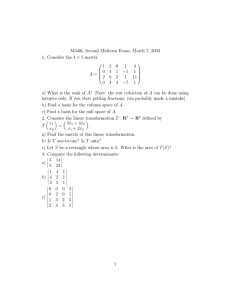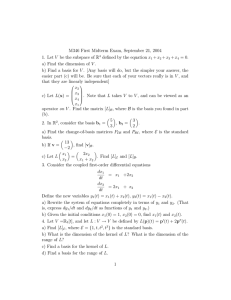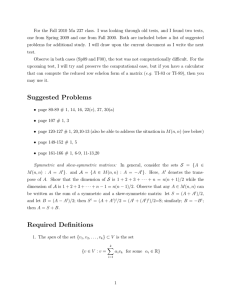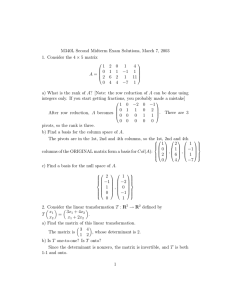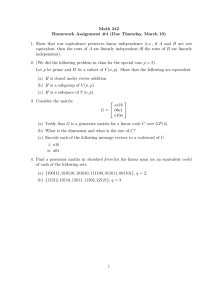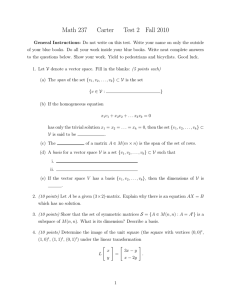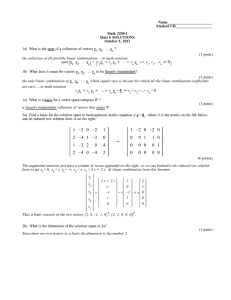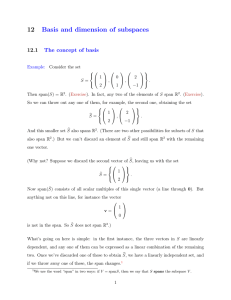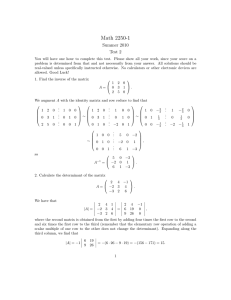M.S. COMPREHENSIVE EXAMINATION IN LINEAR ALGEBRA April 9, 2002
advertisement
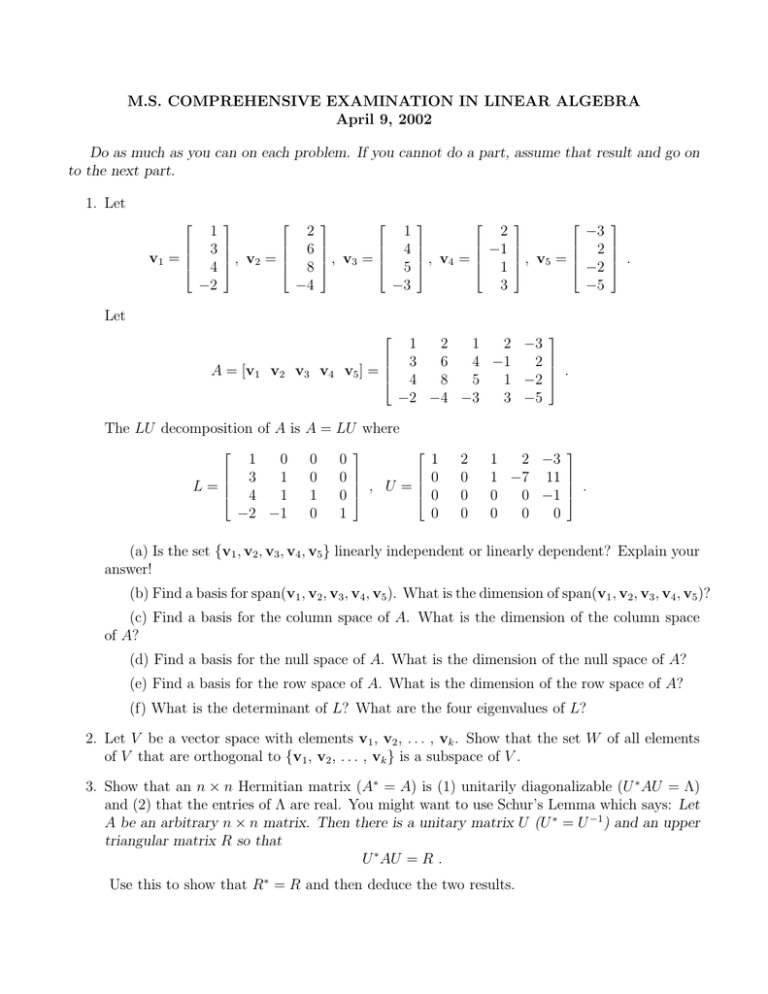
M.S. COMPREHENSIVE EXAMINATION IN LINEAR ALGEBRA
April 9, 2002
Do as much as you can on each problem. If you cannot do a part, assume that result and go on
to the next part.
1. Let
v1 =
1
3
4
−2
,
v2 =
2
6
8
−4
,
v3 =
1
4
5
−3
,
v4 =
2
−1
1
3
,
v5 =
−3
2
−2
−5
.
Let
A = [v1 v2 v3 v4 v5 ] =
1
2
1
2 −3
3
6
4 −1
2
4
8
5
1 −2
−2 −4 −3
3 −5
.
The LU decomposition of A is A = LU where
L=
1
0
3
1
4
1
−2 −1
0
0
1
0
0
0
0
1
, U =
1
0
0
0
2
0
0
0
1
2 −3
1 −7 11
0
0 −1
0
0
0
.
(a) Is the set {v1 , v2 , v3 , v4 , v5 } linearly independent or linearly dependent? Explain your
answer!
(b) Find a basis for span(v1 , v2 , v3 , v4 , v5 ). What is the dimension of span(v1 , v2 , v3 , v4 , v5 )?
(c) Find a basis for the column space of A. What is the dimension of the column space
of A?
(d) Find a basis for the null space of A. What is the dimension of the null space of A?
(e) Find a basis for the row space of A. What is the dimension of the row space of A?
(f) What is the determinant of L? What are the four eigenvalues of L?
2. Let V be a vector space with elements v1 , v2 , . . . , vk . Show that the set W of all elements
of V that are orthogonal to {v1 , v2 , . . . , vk } is a subspace of V .
3. Show that an n × n Hermitian matrix (A∗ = A) is (1) unitarily diagonalizable (U ∗ AU = Λ)
and (2) that the entries of Λ are real. You might want to use Schur’s Lemma which says: Let
A be an arbitrary n × n matrix. Then there is a unitary matrix U (U ∗ = U −1 ) and an upper
triangular matrix R so that
U ∗ AU = R .
Use this to show that R∗ = R and then deduce the two results.
